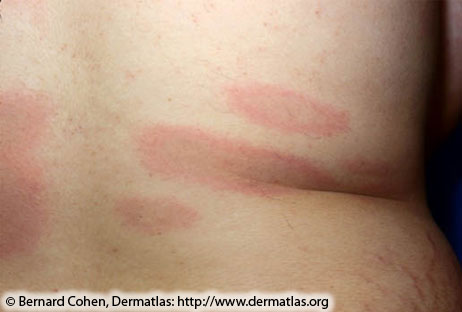Third degree AV block physical examination: Difference between revisions
| (15 intermediate revisions by 3 users not shown) | |||
| Line 4: | Line 4: | ||
==Overview== | ==Overview== | ||
The physical exam is usually remarkable for bradycardia. | The physical exam is usually remarkable for [[bradycardia]]. Most of the [[patients]]' will have [[cannon A-waves]] on the [[JVP]] exam due to the simultaneous [[contraction]] of [[atria]] and [[ventricles]] that lead to significant pushing of [[blood]] against the [[AV valve]]. Particularly with [[heart rates]] below 40/min, [[patients]] might also demonstrate findings consistent with decompensated [[heart failure]] and [[respiratory distress]], such as [[diaphoresis]], [[altered mental status]], [[tachypnea]], [[cold skin]], and decreased [[capillary]] refill. | ||
==Physical Examination== | ==Physical Examination== | ||
Physical examination of patients with third degree AV block is usually remarkable for bradycardia, hypotension and hypoperfusion plus/minus sign and symptoms of heart failure such as edema, pulmonary rales, and S3 gollop. In the presence of primary etiology and secondary heart block such as myocardial infarction or Lyme disease other sign and symptoms such as rash or chest pain might be present as well. | Physical examination of patients with third degree AV block is usually remarkable for [[bradycardia]], hypotension and hypoperfusion plus/minus sign and symptoms of heart failure such as edema, pulmonary rales, and S3 gollop. In the presence of primary etiology and secondary heart block such as myocardial infarction or Lyme disease other sign and symptoms such as rash or chest pain might be present as well. | ||
===Appearance of the Patient=== | ===Appearance of the Patient=== | ||
*The patient may present with [[altered mental status]] because of hypoperfusion. | *The patient may present with [[altered mental status]] because of hypoperfusion. | ||
*They might appear lethargic or [[anxious]] or present in severe unconscious state. | |||
*Patient may be [[diaphoresis|diaphoretic]] and pale and may experiencing severe [[chest pain]] if the cause of complete heart block is [[myocardial infarction]].<ref name="pmid10447229">{{cite journal |vauthors=Kojic EM, Hardarson T, Sigfusson N, Sigvaldason H |title=The prevalence and prognosis of third-degree atrioventricular conduction block: the Reykjavik study |journal=J. Intern. Med. |volume=246 |issue=1 |pages=81–6 |date=July 1999 |pmid=10447229 |doi=10.1046/j.1365-2796.1999.00521.x |url=}}</ref><ref name="pmid19667425">{{cite journal |vauthors=Kojic EM, Hardarson T, Sigfusson N, Sigvaldason H |title=[Third degree atrioventricular block.] |language=Icelandic |journal=Laeknabladid |volume=84 |issue=1 |pages=8–15 |date=January 1998 |pmid=19667425 |doi= |url=}}</ref> | |||
===Vital Signs=== | ===Vital Signs=== | ||
| Line 16: | Line 18: | ||
*[[Bradycardia]] may be present. | *[[Bradycardia]] may be present. | ||
*[[Tachypnea]] may be present. | *[[Tachypnea]] may be present. | ||
*[[Patients]] might be [[febrile]] ([[Lyme disease]], [[endocarditis]]) | |||
* | |||
===Skin=== | ===Skin=== | ||
* Skin [[rash]] may be present if the cause of complete heart block is [[endocarditis]] or [[rheumatic fever]] or [[Lyme disease]]. | * Skin [[rash]] may be present if the cause of complete heart block is [[endocarditis]] or [[rheumatic fever]] or [[Lyme disease]]. | ||
[[Image:Classic Lyme disease rash.jpg|thumb|left|250px| Classic Lyme disease rash - [https://www.cdc.gov/lyme/signs_symptoms/rashes.html Source: CDC.gov ]]] | |||
[[Image:LymeMultiple rash, disseminated infection.jpg|thumb|center|250px|right|Disseminated Lyme disease, multiple rash - [https://www.cdc.gov/lyme/signs_symptoms/rashes.html Source: CDC.gov]]] | |||
===HEENT=== | ===HEENT=== | ||
* HEENT examination of patients with third degree AV block is usually normal. | * HEENT examination of patients with third degree AV block is usually normal. | ||
*[[Cyanosis]] might be present. | |||
*In the case of [[Lyme disease]]: | |||
** [[Headache]] | |||
* [[ | ** Pain on [[neck]] flexion | ||
** Some patients may have: | |||
*** [[Pharyngitis]] | |||
* | *** [[Conjunctivitis]] | ||
* | *** Ptosis | ||
*[[ | *** Facial nerve palsy | ||
*[[ | |||
* [[ | |||
* | |||
* | |||
* [[ | |||
* | |||
* | |||
===Neck=== | ===Neck=== | ||
| Line 58: | Line 45: | ||
* Basilar [[rales]] may be heard. | * Basilar [[rales]] may be heard. | ||
* | * | ||
===Heart=== | ===Heart=== | ||
| Line 76: | Line 50: | ||
===Abdomen=== | ===Abdomen=== | ||
* Abdominal examination of patients with third degree AV block is usually normal. | * Abdominal examination of patients with [[third degree AV block]] is usually normal. | ||
* | *Nevertheless it depends to the basic etiology, for example in other rare etiologies of complete heart block such as infectious- rheumatologic / granolomatosis disease or amyloid disease the following findings might be present: | ||
*[[Hepatomegaly]] | |||
*[[Splenomegaly]] | |||
*H[[hepatosplenomegaly|epatosplenomegaly]] | |||
*[[Hepatomegaly]] | |||
===Back=== | ===Back=== | ||
* Back examination of patients with third degree AV block is usually normal. | * Back examination of patients with third degree AV block is usually normal. | ||
*Sacral edema ight be present in heart failure | |||
*Sacral edema | |||
===Genitourinary=== | ===Genitourinary=== | ||
* Genitourinary examination of patients with third degree AV block is usually normal. | * Genitourinary examination of patients with third degree AV block is usually normal. | ||
===Neuromuscular=== | ===Neuromuscular=== | ||
* Neuromuscular examination of patients with third degree AV block is usually normal. | * Neuromuscular examination of patients with third degree AV block is usually normal. | ||
* | *In sever acute settings and in rare etiologies of complete heart block such as infectious, rheumatologic, granolomatosis disease or amyloid disease abnormal findings might be present such as: | ||
* Altered mental status | |||
* | :*[[Altered mental status]] | ||
* Clonus may be present | :* Coma | ||
* Hyperreflexia / hyporeflexia / areflexia | :* Clonus may be present | ||
* Positive (abnormal) Babinski / plantar reflex unilaterally/bilaterally | :*[[Hyperreflexia]] / [[hyporeflexia]] / [[areflexia]] | ||
* | :* Positive (abnormal) Babinski / plantar reflex unilaterally/bilaterally | ||
:* Bell spulsy suggestive of cranial nerve seven deficit in [[Lyme disease]] or [[sarcoidosis]]. | |||
===Extremities=== | ===Extremities=== | ||
*[[Pedal edema]] | In acute or chronic decompensated heart failure the followings might be present: | ||
*[[Pedal edema]] | |||
*[[Clubbing]] | *[[Clubbing]] | ||
*[[Cyanosis]] | *[[Cyanosis]] | ||
Latest revision as of 19:20, 13 June 2021
|
Third degree AV block Microchapters | |
|
Diagnosis | |
|---|---|
|
Treatment | |
|
Case Studies | |
|
Third degree AV block physical examination On the Web | |
|
American Roentgen Ray Society Images of Third degree AV block physical examination | |
|
Risk calculators and risk factors for Third degree AV block physical examination | |
Editor-In-Chief: C. Michael Gibson, M.S., M.D. [1]; Associate Editor(s)-in-Chief: Soroush Seifirad, M.D.[2] Raviteja Guddeti, M.B.B.S. [3] ; Aditya Ganti M.B.B.S. [4]
Overview
The physical exam is usually remarkable for bradycardia. Most of the patients' will have cannon A-waves on the JVP exam due to the simultaneous contraction of atria and ventricles that lead to significant pushing of blood against the AV valve. Particularly with heart rates below 40/min, patients might also demonstrate findings consistent with decompensated heart failure and respiratory distress, such as diaphoresis, altered mental status, tachypnea, cold skin, and decreased capillary refill.
Physical Examination
Physical examination of patients with third degree AV block is usually remarkable for bradycardia, hypotension and hypoperfusion plus/minus sign and symptoms of heart failure such as edema, pulmonary rales, and S3 gollop. In the presence of primary etiology and secondary heart block such as myocardial infarction or Lyme disease other sign and symptoms such as rash or chest pain might be present as well.
Appearance of the Patient
- The patient may present with altered mental status because of hypoperfusion.
- They might appear lethargic or anxious or present in severe unconscious state.
- Patient may be diaphoretic and pale and may experiencing severe chest pain if the cause of complete heart block is myocardial infarction.[1][2]
Vital Signs
- Bradycardia may be present.
- Tachypnea may be present.
- Patients might be febrile (Lyme disease, endocarditis)
Skin
- Skin rash may be present if the cause of complete heart block is endocarditis or rheumatic fever or Lyme disease.


HEENT
- HEENT examination of patients with third degree AV block is usually normal.
- Cyanosis might be present.
- In the case of Lyme disease:
- Headache
- Pain on neck flexion
- Some patients may have:
- Pharyngitis
- Conjunctivitis
- Ptosis
- Facial nerve palsy
Neck
- Cannon 'a' waves may be seen often.
- Elevated JVP may be seen in the presence of heart failure.
Lungs
- Basilar rales may be heard.
Heart
- S3 gallop may be heard in the presence of heart failure.
Abdomen
- Abdominal examination of patients with third degree AV block is usually normal.
- Nevertheless it depends to the basic etiology, for example in other rare etiologies of complete heart block such as infectious- rheumatologic / granolomatosis disease or amyloid disease the following findings might be present:
- Hepatomegaly
- Splenomegaly
- Hepatosplenomegaly
Back
- Back examination of patients with third degree AV block is usually normal.
- Sacral edema ight be present in heart failure
Genitourinary
- Genitourinary examination of patients with third degree AV block is usually normal.
Neuromuscular
- Neuromuscular examination of patients with third degree AV block is usually normal.
- In sever acute settings and in rare etiologies of complete heart block such as infectious, rheumatologic, granolomatosis disease or amyloid disease abnormal findings might be present such as:
- Altered mental status
- Coma
- Clonus may be present
- Hyperreflexia / hyporeflexia / areflexia
- Positive (abnormal) Babinski / plantar reflex unilaterally/bilaterally
- Bell spulsy suggestive of cranial nerve seven deficit in Lyme disease or sarcoidosis.
Extremities
In acute or chronic decompensated heart failure the followings might be present:
References
- ↑ Kojic EM, Hardarson T, Sigfusson N, Sigvaldason H (July 1999). "The prevalence and prognosis of third-degree atrioventricular conduction block: the Reykjavik study". J. Intern. Med. 246 (1): 81–6. doi:10.1046/j.1365-2796.1999.00521.x. PMID 10447229.
- ↑ Kojic EM, Hardarson T, Sigfusson N, Sigvaldason H (January 1998). "[Third degree atrioventricular block.]". Laeknabladid (in Icelandic). 84 (1): 8–15. PMID 19667425.